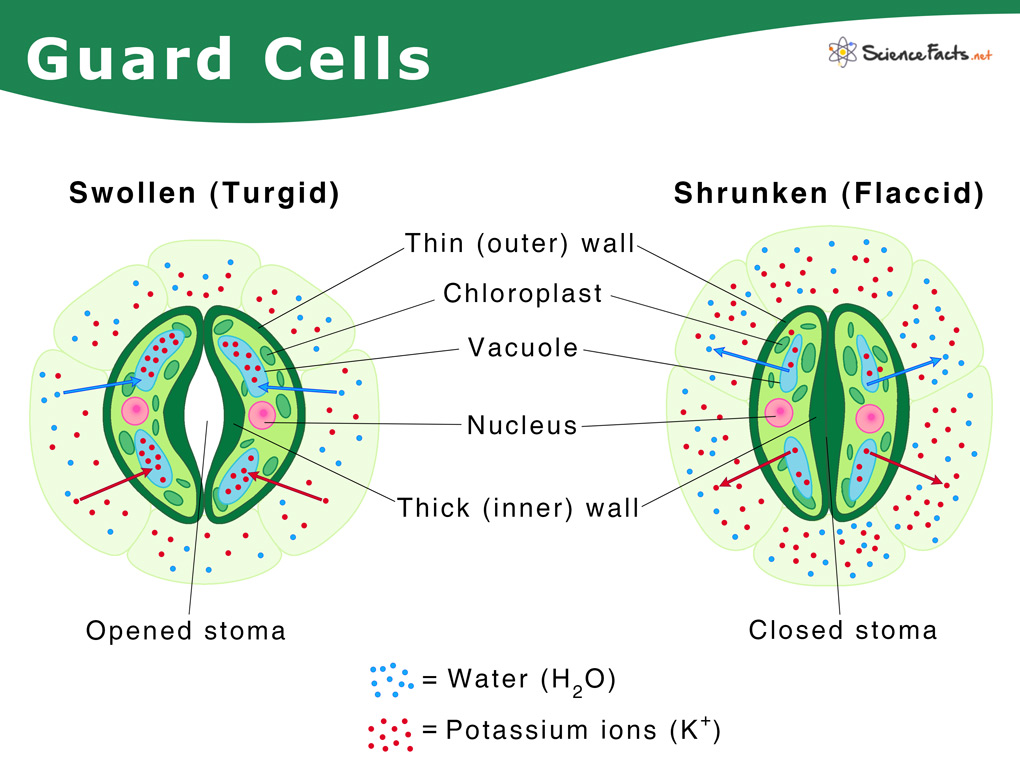Structure
What do Guard Cells Do
Compared to the rest of the leaf, the cuticle of guard cells is more permeable to water vapor. Cuticle permeability also depends on its chemical composition. In young and developing guard cells, cellulose and pectin are deposited into the plasmodesmata, forming a thin cytoplasm layer. However, they disappear in a mature guard cell. The cellulose microfibrils are oriented radially in the cell walls. Subsidiary cells, also known as accessory cells, are epidermal cells surrounding each guard cell. They help in the interaction between the guard cells and the other epidermal cells, protecting the latter from guard cell expansion.
Parts
Guard cells are found to contain different cell organelles based on the plant species. The typical cell organelles found in guard cells are: In the Presence of Light During this phase, water starts entering the guard cell, making them swell and becomes turgid. It is accompanied by two consecutive series of events, causing the stomata to open:
Uptake of potassium ions (K+) by the guard cell from the surrounding. This K+ influx increases the solute potential but decreases the water potential inside the guard cell.Uptake of chloride ions (Cl–)
As the guard cell’s ion concentration rises, water starts to move inside the guard cell, making its thin side bulge outwards, similar to an inflated balloon. The thick side also moves in the same direction, making the guard cells look like the letter ‘O’. The pressure inside the guard cell is controlled by regulating ions and sugar molecules’ entry and exit. In the Absence of Light During this phase, loss of water from the guard cell through osmosis makes them flaccid and looks like the letter ‘I’. This influx of water occurs due to:
Release of K+ ions from the guard cells to the neighboring cellsRelease of Cl– ions and malate from the guard cells
Other Functions
Transpiration: Opening of guard cells causes removal of excess water in the form of water vapor from the plant’s aerial parts, a process known as transpiration. Gas Exchange: Facilitating the uptake of carbon dioxide and oxygen release through stomata during photosynthesis. Keeping Moisture Balance: Controlling the opening and closing of stomata based on the environmental and internal factors, to maintain the desired moisture level within the cell.
